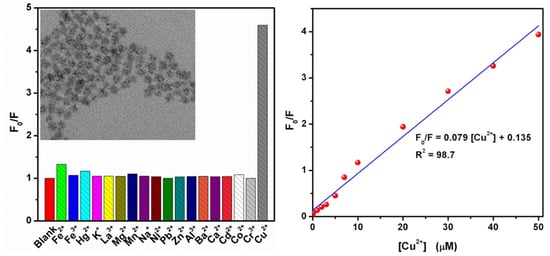Citric Acid Capped CdS Quantum Dots for Fluorescence Detection of Copper Ions (II) in Aqueous Solution
Abstract
Share and Cite
Wang, Z.; Xiao, X.; Zou, T.; Yang, Y.; Xing, X.; Zhao, R.; Wang, Z.; Wang, Y. Citric Acid Capped CdS Quantum Dots for Fluorescence Detection of Copper Ions (II) in Aqueous Solution. Nanomaterials 2019, 9, 32. https://doi.org/10.3390/nano9010032
Wang Z, Xiao X, Zou T, Yang Y, Xing X, Zhao R, Wang Z, Wang Y. Citric Acid Capped CdS Quantum Dots for Fluorescence Detection of Copper Ions (II) in Aqueous Solution. Nanomaterials. 2019; 9(1):32. https://doi.org/10.3390/nano9010032
Chicago/Turabian StyleWang, Zhezhe, Xuechun Xiao, Tong Zou, Yue Yang, Xinxin Xing, Rongjun Zhao, Zidong Wang, and Yude Wang. 2019. "Citric Acid Capped CdS Quantum Dots for Fluorescence Detection of Copper Ions (II) in Aqueous Solution" Nanomaterials 9, no. 1: 32. https://doi.org/10.3390/nano9010032
APA StyleWang, Z., Xiao, X., Zou, T., Yang, Y., Xing, X., Zhao, R., Wang, Z., & Wang, Y. (2019). Citric Acid Capped CdS Quantum Dots for Fluorescence Detection of Copper Ions (II) in Aqueous Solution. Nanomaterials, 9(1), 32. https://doi.org/10.3390/nano9010032




